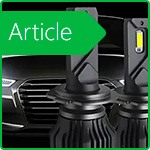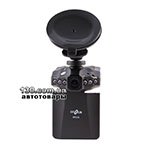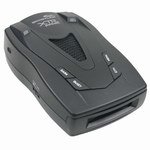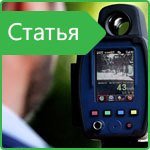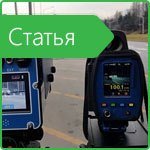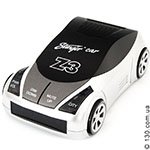Anti-radar (radar detector) in the car: the principles of successful application
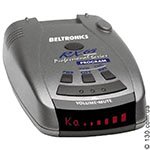 Finally you decided buy a radar detector and are now going on the first trip with him. If someone had the idea that it is an opportunity to quietly press the gas pedal to the floor and “polihachit” on the road, then he is very mistaken. An antiradar or radar detector 1 , which is the same in general terms, can be a completely useless acquisition if you don’t know how it works and what information it gives. The driver must be prepared to understand this information and immediately respond to the anti-radar signal. Antiradar or car radar detector has some features of the application, which is important to remember always.
Finally you decided buy a radar detector and are now going on the first trip with him. If someone had the idea that it is an opportunity to quietly press the gas pedal to the floor and “polihachit” on the road, then he is very mistaken. An antiradar or radar detector 1 , which is the same in general terms, can be a completely useless acquisition if you don’t know how it works and what information it gives. The driver must be prepared to understand this information and immediately respond to the anti-radar signal. Antiradar or car radar detector has some features of the application, which is important to remember always.
A properly installed radar detector is key to your success. It is recommended to find for him a place where the road will be in the field of direct visibility of the device. According to reviews, it is important to install a radar detector where you will not need to be distracted from the road in order to look at it. Yes, you can hide it in a secluded place. Only in this case, will it be problematic to control whether it is turned on and whether the power is connected. And besides, the elements of the passenger compartment and the body can interfere with the transmission of the radar and laser signals, and thus the range of the detector will be reduced. And if you place it more distantly, in order to look at it, you will need to divert attention from the road, and eventually the risk of a traffic accident will increase. After all, your car overcomes almost 17 meters per second at a speed of 60 km/h, and at 120 km/h-33 meters per second.
Regarding the height at which to position the radar detector, user reviews and their opinions differ. On the one hand, it is obvious that the higher the antenna is located, the greater is the range of radio signal reception. But on the other hand, the wavelength of the microwave signal of the radar is somewhat different, and such a signal has the property of being well reflected from surfaces (from the track, car hood). And, by placing the radar detector at the bottom of the windshield, you also increase the probability of catching a laser signal (because laser radar often targets the most reflective surface-a car number or headlight). So it is recommended to install a radar detector at the top of the windshield, if your region does not use laser radars, and below-if you have urban trips prevailing, as well as that the hanging radar power supply wire does not interfere with you.
Do not forget about protecting your investment in the anti-radar and take measures to prevent its possible theft. It is not necessary to attract the attention of intruders and provoke theft, leaving the radar detector in a prominent place in the car in the unguarded parking lot. After all, in order to steal the device, the robber will be enough for half a minute: break the glass, pick up the anti-radar and escape. And you, in addition to the loss of the device, also receive damage from damage to the car. So, having spent the same half-minute to remove the device, when you leave the car, you can protect yourself from such troubles. It is also important to remove the radar detector "from the sun" in the summer in order to protect it from overheating and due to damage to the body.
Separately, you should pay attention to the features of use of anti-radar on urban travel . The possibility of a radar detector to reduce the number of false positives will be, as it is impossible, by the way in a city where there is a large amount of interference. Each model has different capabilities and you should figure out how to use them effectively. And if you drive mostly in the city, then it’s worth to buy a radar detector , focused on city driving. Indeed, the numerous false alarms of the detector will undoubtedly lead to a decrease in the response of the driver to his signals. And when you go out of town, where the amount of interference is reduced, it is important to switch the detector operation mode for use on the track. This route mode provides a greater range of signal reception. Although there are also detectors with an automatic sensitivity reduction system based on the total amount of interference. But such a system does not immediately switch to an increased reception range, and its sensitivity is less than the route mode of operation.
Learn the "language" of the anti-radar . A fuzzy inconsistent signal in the K frequency range may indicate that there is interference. But you need to remember that such a signal can also mean that you are at a considerable distance from the radar, and the terrain prevents the signal from being skipped. Or perhaps the traffic police officer turns on the radar periodically, measuring the speed of only the objects that interest him. And ignoring such a warning device, you can get "in the lens" of the radar and do not have time to react as necessary.
Immediate driver response in response to an anti-radar signal is an important principle for using this device. It is an instant response to the sound of the detector, without delay for a second, perhaps that will help you to slow down and not be caught in excess. Just do not forget that in a city such sudden braking can at least bring trouble to you and your car.
But you can't just buy a radar detector and blindly rely on it . Your driver's prudence on the road is much more efficient than any radar detector. If you are already lucky enough to avoid several speeding tickets thanks to this device, then this is not a reason to forget about vigilance. Lack of driver care-violation of the rules of speed-an inevitable punishment, in this chain there is only one question-a matter of time. The radar detector only recognizes the radiation of radar, which the human body is not able to perceive. However, it is a person, not a radar detector, who is able to drive a car, press a brake or gas pedal, see a traffic police officer with a radar "in the elder", or a traffic police car with a video recording system following it.
Calculate the traffic situation a step further is the professional skill of a vigilant and prudent driver. He controls the whole situation around the car, analyzes all movements, objects and vehicles in the zone of attention for potential danger. And it seems to the average typical driver to devote a maximum of 10% of his attention to the road and look 50 meters ahead. With this approach, the driver will not save any anti-radar from careless driving and punishment for breaking traffic rules, and the price of such negligence may be too high. So, every driver should clearly remember that a radar detector installed in a car or a radar detector is not a panacea. The device will help to avoid unnecessary attention of traffic police, but does not give the right to carelessly exceeding the speed limit and violation of traffic rules.
Everything else, for effective work of your anti-radar (radar detector) do not forget to take into account the correspondence of the range of its working frequencies and the applied radar .
Frequency ranges of radar detectors (almost all)
- X: 10.525 GHz ± 25 MHz;
- K: 24.150 GHz ± 100 MHz;
- Ka: 34.700 GHz ± 1300 MHz;
- Laser: 904 nm, 33 MHz;
- Ultra-X: short range X pulse mode;
- Ultra-K: K short range pulse mode;
- Ultra-Ka: Ka-range short impulse mode;
- POPtm: certified mode for determining the pulse ranges of K and Ka;
- F-POPtm: certified mode for determining the pulse ranges K, Ka and X;
- Ku: 13.400 GHz ± 25 MHz (supported by some models).
Frequency ranges of the main radars and speed meters
- Vizir: K range;
- Golden Eagle: K range;
- Radis: K range;
- Falcon: X range;
- Spark: K range;
- LISD (and its variants): L (Laser) range;
- Arena: K range;
- Beam: X range;
- Barrier: X range.
Note.
In essence, the fundamental difference between a radar detector and an anti-radar is that a radar detector is a legal passive device that captures the signals of the radar to which it is configured, and "reports" about it to the user. A radar detector is considered an illegal active device that is capable of interfering with or responding to an outgoing radar signal, and is forbidden to be used worldwide. But in a broad sense, the concept of radar detector and anti-radar are identified and reduced to the first definition. With delivery in Ukraine, the anti-radar can be bought in Kiev, Kharkov, Odessa at 130.com.ua.
See video reviews of radar detectors
Materials on the topic

Stay tuned for updates!
Subscribe to our Telegram channel and be the first to receive useful materials.
Subscribe









